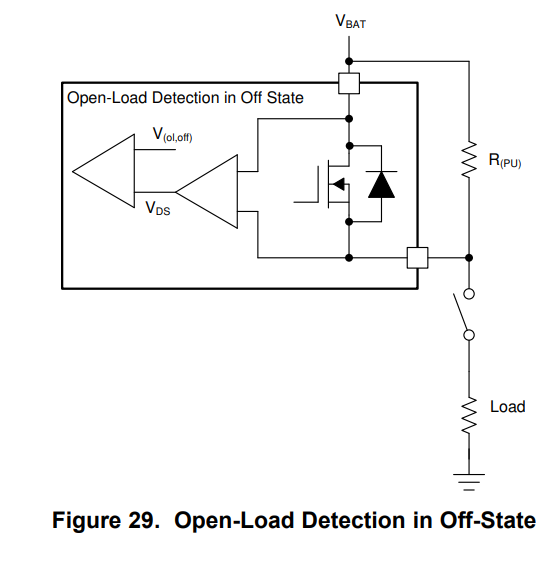Hi team,
Q1 - in below table, -75uA means current going out of the pin (for negative current, most of TI datasheet defines this way), or current going into the pin?
Q2 - in below table, the threshold is between 1.6V and 2.6V ==> I suppose the max pull-up resistor Rup,max = Vth,min/Isink,max = 1.6V/75uA = 21.3kohm ==> is this correct? i find it's a bit confusing to define V(ol,off) between 1.6V and 2.6V, i.e. which should be the worst case to calculate the maximum Rup customer need to choose to guarantee open load detection.


